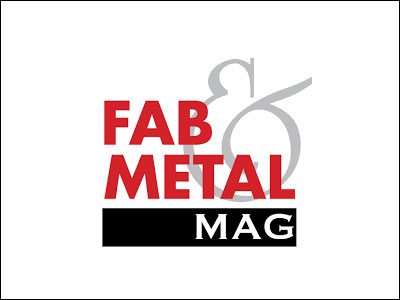“Our manufacturing clients have really embraced the power of AI during the last year. From improved forecast accuracy that affects inventory levels, to working more openly with changing customer needs and the overall customer experience, they are already in the effects of using this data” comments Supply Chain Expert and Consultant, Lisa Anderson MBA, CSCP, CLTD President of LMA Consulting Group.
###
During the next ten years, more fabricators will compete with sophisticated, connected networks that apply artificial intelligence to manage data that reduces their cycle times in design to manufacturing to delivery.
During the next ten years, watch for the operations of all metal fabricators – regardless of size – to evolve and compete by building sophisticated, connected networks that help them increase their process speed in design concept to order input to manufacturing and delivery by using varying degrees of artificial intelligence (AI) in the management of big data. The competitive use of AI to effectively organize, analyze and apply enormous volumes of information for making faster and better decisions will, in turn, drive the emergence of smart factories, expand the applications of autonomous robots, and transform the way we all live and work in an Internet of Things (IoT) environment.
“AI and other forms of technology are transforming manufacturing as we know it. From reevaluating sourcing and enabling robots to predictive maintenance and shortened design times, AI offers up vast potential. AI and human learning will impact most aspects of manufacturing, resulting in improved profits, inventory levels and cash flow,” predicted Lisa Anderson, MBA, CSCP, CLTD, the president of LMA Consulting Group Inc. (Claremont, CA). “Our manufacturing clients have really embraced the power of AI during the last year. From improved forecast accuracy that affects inventory levels, to working more openly with changing customer needs and the overall customer experience, they are already seeing the effects of using this data.”
However, learning how to navigate this perfect storm for manufacturing success doesn’t come easy. “Companies still need to be smart. This takes work, sharp management and a strong team to be successful,” cautioned Anderson. “By integrating AI with tried-and-true sales, inventory and operations planning techniques and taking advantage of predictive analytics and other human learning technologies in conjunction with ERP systems, manufacturers can become better at forecasting and exceeding customer expectations. In fact, for every one percent improvement in forecast accuracy, there can be a seven percent improvement in inventory levels and therefore cash flow.” 1 So competing with big data can be incredibly beneficial, but the secret to getting the most out of it isn’t the quantity, but the quality.
Published in Fabricating & Metalworking Magazine in Dec. 2019



